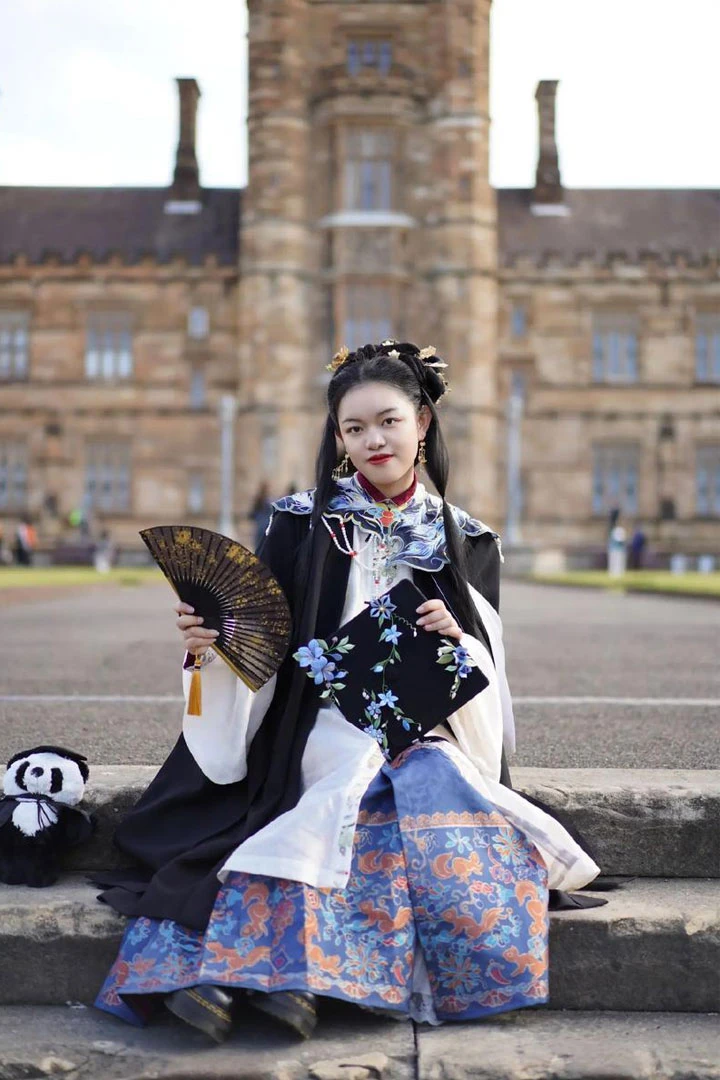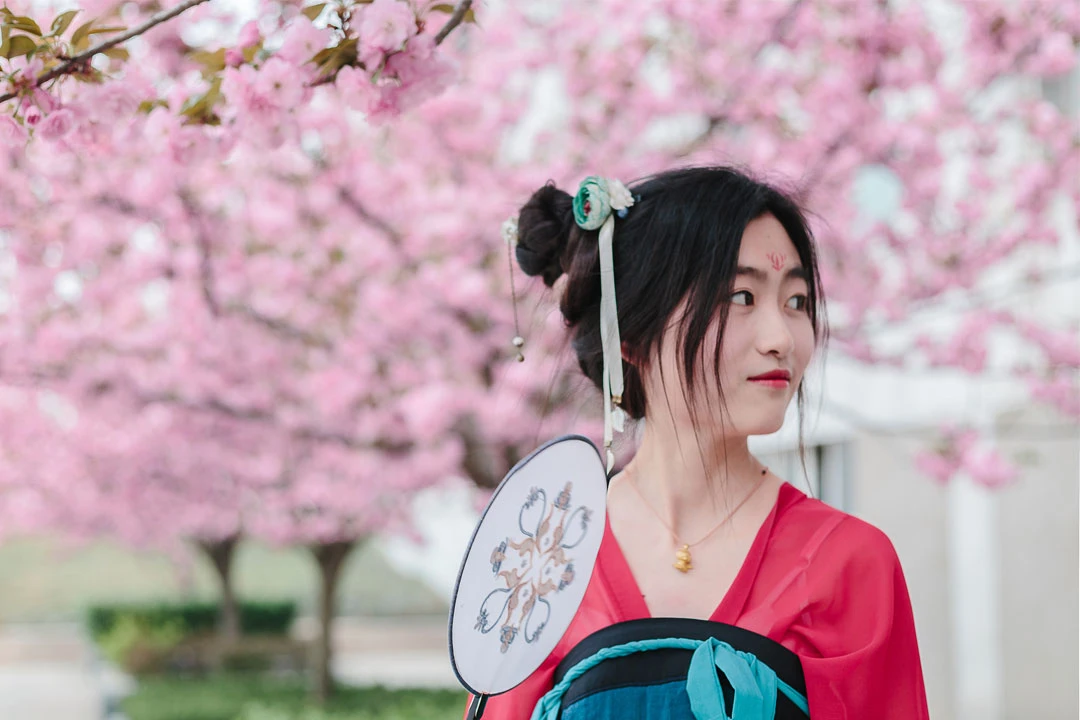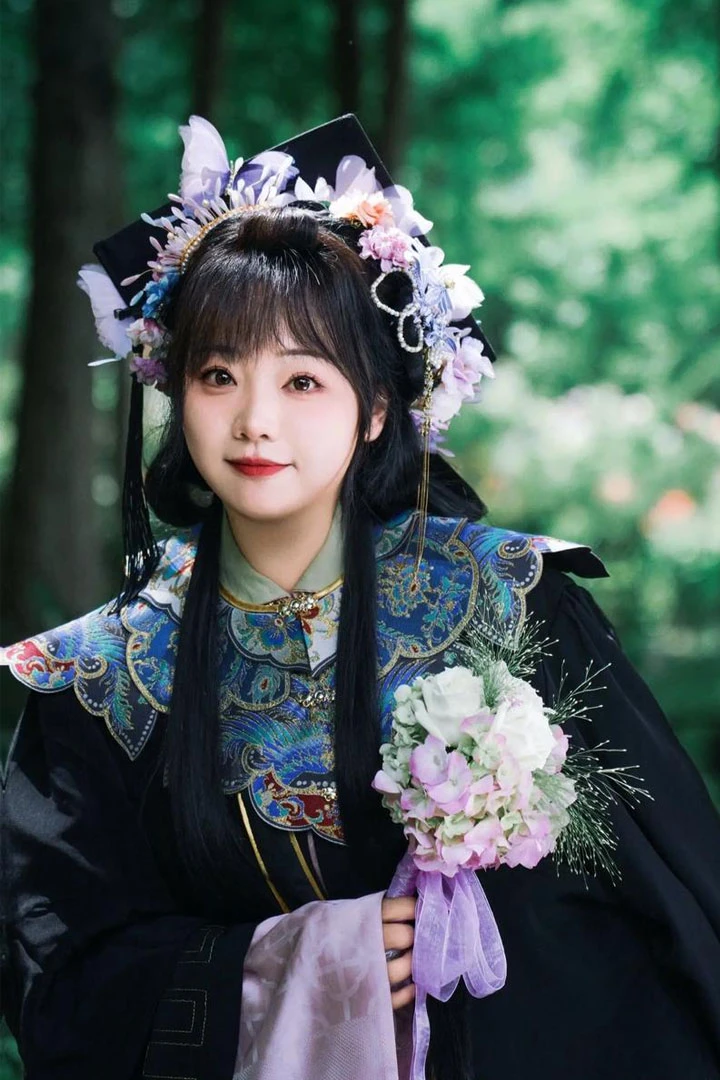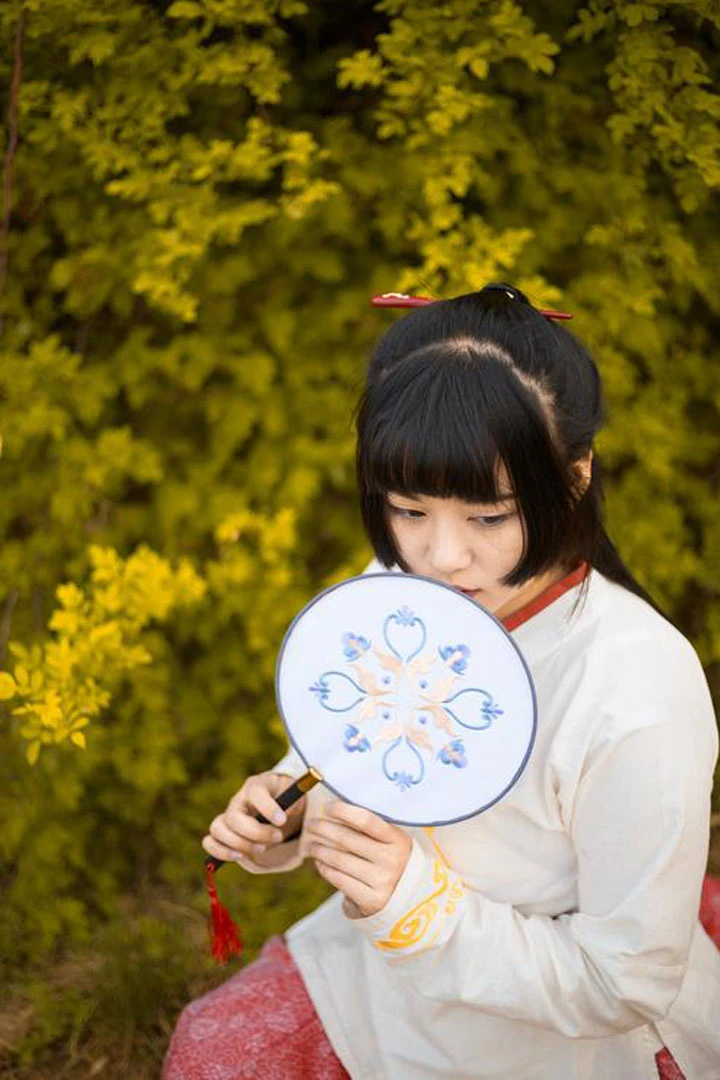In recent times, a captivating trend has emerged during graduation season across Chinese universities: the blending of traditional Chinese fashion (Guofeng) with the formal academic regalia, which has won the hearts of the younger generation, particularly represented by Generation Z.
Behind this trend, however, lies a nascent stage for the industry of traditional attire such as Hanfu. Despite its rising popularity, issues persist such as inconsistent quality and limited original design capabilities. Critics suggest that brands specializing in Guofeng should delve deeper into the cultural essence of traditional Chinese culture. By doing so, they can not only showcase traditional aesthetics but also cater to modern lifestyle needs.
Improving fabric quality, craftsmanship, and exploring innovative ways to express traditional culture are seen as essential steps to ensure that these products stand the test of time and embody historical significance.

This blending of Guofeng with academic dress not only celebrates cultural heritage but also serves as a personal statement of identity and pride. For many young graduates, incorporating elements of Hanfu into their graduation attire is a deliberate choice to connect with their roots and distinguish themselves in a sea of uniform academic attire.
Social media platforms play a pivotal role in amplifying and popularizing these fashion trends. Chinese students studying abroad often share their Guofeng graduation outfits, sparking admiration and curiosity among peers and followers worldwide. The visual impact of these ensembles transcends borders, fostering a global appreciation for Chinese aesthetics and craftsmanship.
Furthermore, the resurgence of Guofeng during graduation season is supported by a growing industry catering to traditional Chinese clothing enthusiasts. Designers and brands specializing in Hanfu and related styles have flourished, offering a wide range of garments that blend historical authenticity with modern design sensibilities. This burgeoning market not only meets the demand for ceremonial attire but also fuels creativity and innovation within the fashion industry.
The embrace of Guofeng reflects broader societal shifts towards cultural confidence and pride among Chinese youth. It signifies a reclaiming of cultural narratives and symbols that were once marginalized or overlooked in favor of Western influences. By integrating Guofeng into significant life milestones like graduation, young people assert their cultural identity and contribute to a global dialogue on diversity and inclusivity in fashion.
Moreover, the popularity of Guofeng in academic settings highlights its educational value in promoting cultural awareness and understanding. Universities and educational institutions have increasingly incorporated discussions on traditional Chinese attire into their curriculum, fostering a deeper appreciation for cultural heritage among students of diverse backgrounds.
The trend also intersects with broader movements advocating for sustainable and ethical fashion practices. Many enthusiasts of Guofeng prioritize craftsmanship and quality, often opting for handmade garments or supporting artisans who specialize in traditional embroidery and textile techniques. This emphasis on heritage and craftsmanship aligns with contemporary values of sustainability and cultural preservation.
As Guofeng continues to evolve, it faces challenges and opportunities in navigating cultural appropriation and authenticity. Critics argue about the commercialization of traditional attire and the need for respectful representation of cultural symbols. Yet, proponents argue that the global embrace of Guofeng promotes cultural exchange and understanding, transcending boundaries and fostering mutual respect.
Looking ahead, the future of Guofeng in graduation attire appears promising, driven by ongoing cultural revitalization efforts and increasing global interest in Chinese heritage. As more young people embrace Guofeng as a form of self-expression and cultural pride, its influence is likely to extend beyond graduation ceremonies into everyday fashion and cultural events worldwide.
the fusion of Guofeng with academic regalia during Chinese graduation seasons embodies a harmonious blend of tradition and modernity. It symbolizes a celebration of cultural heritage, personal identity, and creativity in fashion, resonating with a generation that values authenticity and diversity. As graduates proudly don these culturally rich ensembles, they not only commemorate their academic achievements but also showcase the beauty and resilience of Chinese traditions to a global audience.
The Future of Guofeng
The integration of Guofeng elements into graduation attire not only celebrates cultural heritage but also serves as a personal statement of identity and pride. For many young graduates, wearing Hanfu-inspired skirts or incorporating traditional embroidery into their outfits is a deliberate choice to connect with their roots and distinguish themselves in a sea of uniform academic attire.
Social media platforms play a pivotal role in amplifying and popularizing these fashion trends. Chinese students studying abroad often share their Guofeng graduation outfits, sparking admiration and curiosity among peers and followers worldwide. The visual impact of these ensembles transcends borders, fostering a global appreciation for Chinese aesthetics and craftsmanship.
Furthermore, the resurgence of Guofeng during graduation season is supported by a growing industry catering to traditional Chinese clothing enthusiasts. Designers and brands specializing in Hanfu and related styles have flourished, offering a wide range of garments that blend historical authenticity with modern design sensibilities. This burgeoning market not only meets the demand for ceremonial attire but also fuels creativity and innovation within the fashion industry.
The embrace of Guofeng reflects broader societal shifts towards cultural confidence and pride among Chinese youth. It signifies a reclaiming of cultural narratives and symbols that were once marginalized or overlooked in favor of Western influences. By integrating Guofeng into significant life milestones like graduation, young people assert their cultural identity and contribute to a global dialogue on diversity and inclusivity in fashion.
Moreover, the popularity of Guofeng in academic settings highlights its educational value in promoting cultural awareness and understanding. Universities and educational institutions have increasingly incorporated discussions on traditional Chinese attire into their curriculum, fostering a deeper appreciation for cultural heritage among students of diverse backgrounds.
The trend also intersects with broader movements advocating for sustainable and ethical fashion practices. Many enthusiasts of Guofeng prioritize craftsmanship and quality, often opting for handmade garments or supporting artisans who specialize in traditional embroidery and textile techniques. This emphasis on heritage and craftsmanship aligns with contemporary values of sustainability and cultural preservation.
As Guofeng continues to evolve, it faces challenges and opportunities in navigating cultural appropriation and authenticity. Critics argue about the commercialization of traditional attire and the need for respectful representation of cultural symbols. Yet, proponents argue that the global embrace of Guofeng promotes cultural exchange and understanding, transcending boundaries and fostering mutual respect.
Looking ahead, the future of Guofeng in graduation attire appears promising, driven by ongoing cultural revitalization efforts and increasing global interest in Chinese heritage. As more young people embrace Guofeng as a form of self-expression and cultural pride, its influence is likely to extend beyond graduation ceremonies into everyday fashion and cultural events worldwide.
In conclusion, the fusion of Guofeng with academic regalia during Chinese graduation seasons embodies a harmonious blend of tradition and modernity. It symbolizes a celebration of cultural heritage, personal identity, and creativity in fashion, resonating with a generation that values authenticity and diversity. As graduates proudly don these culturally rich ensembles, they not only commemorate their academic achievements but also showcase the beauty and resilience of Chinese traditions to a global audience.



